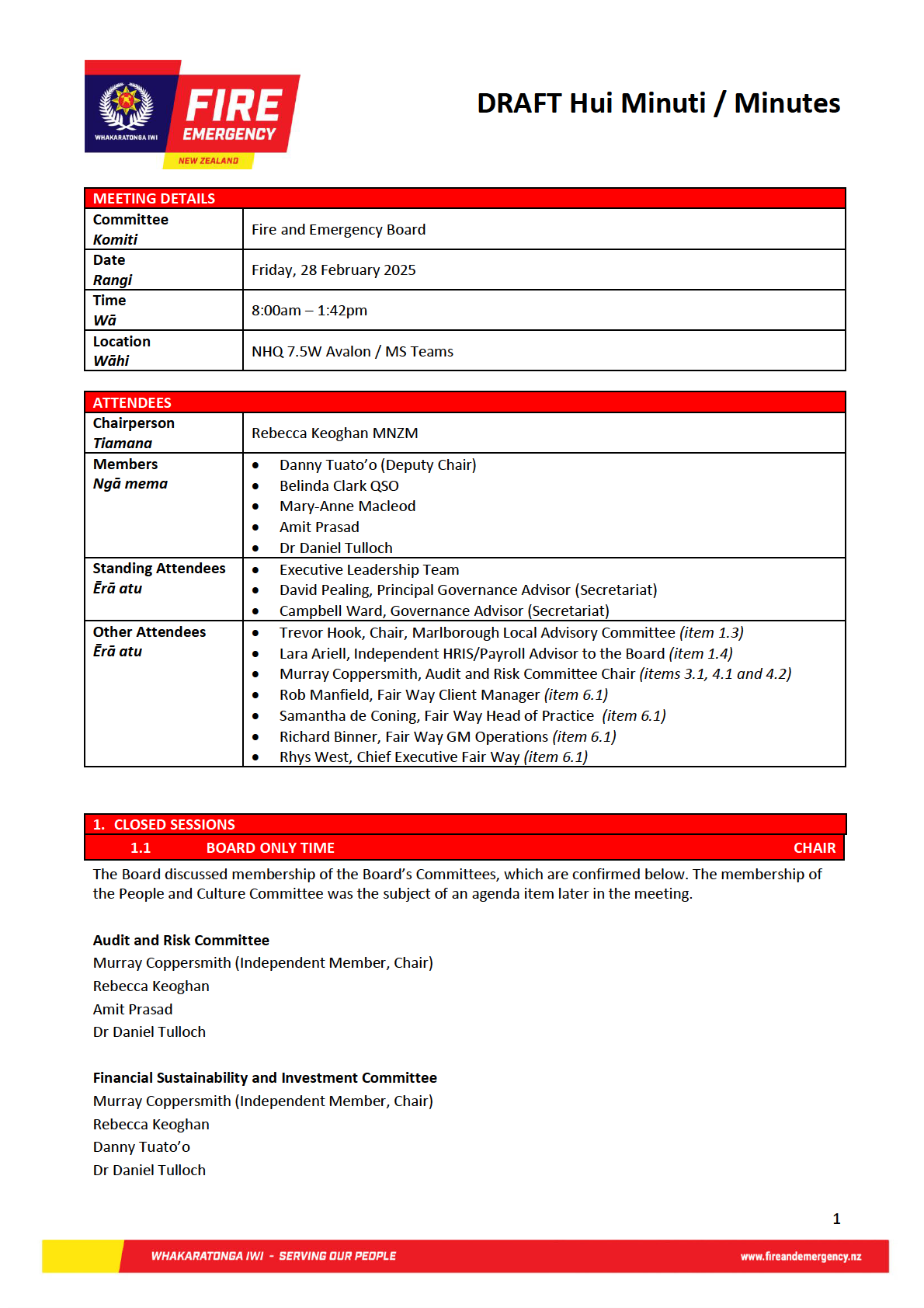
1982
ACT
INFORMATION
OFFICIAL
THE
UNDER
RELEASED
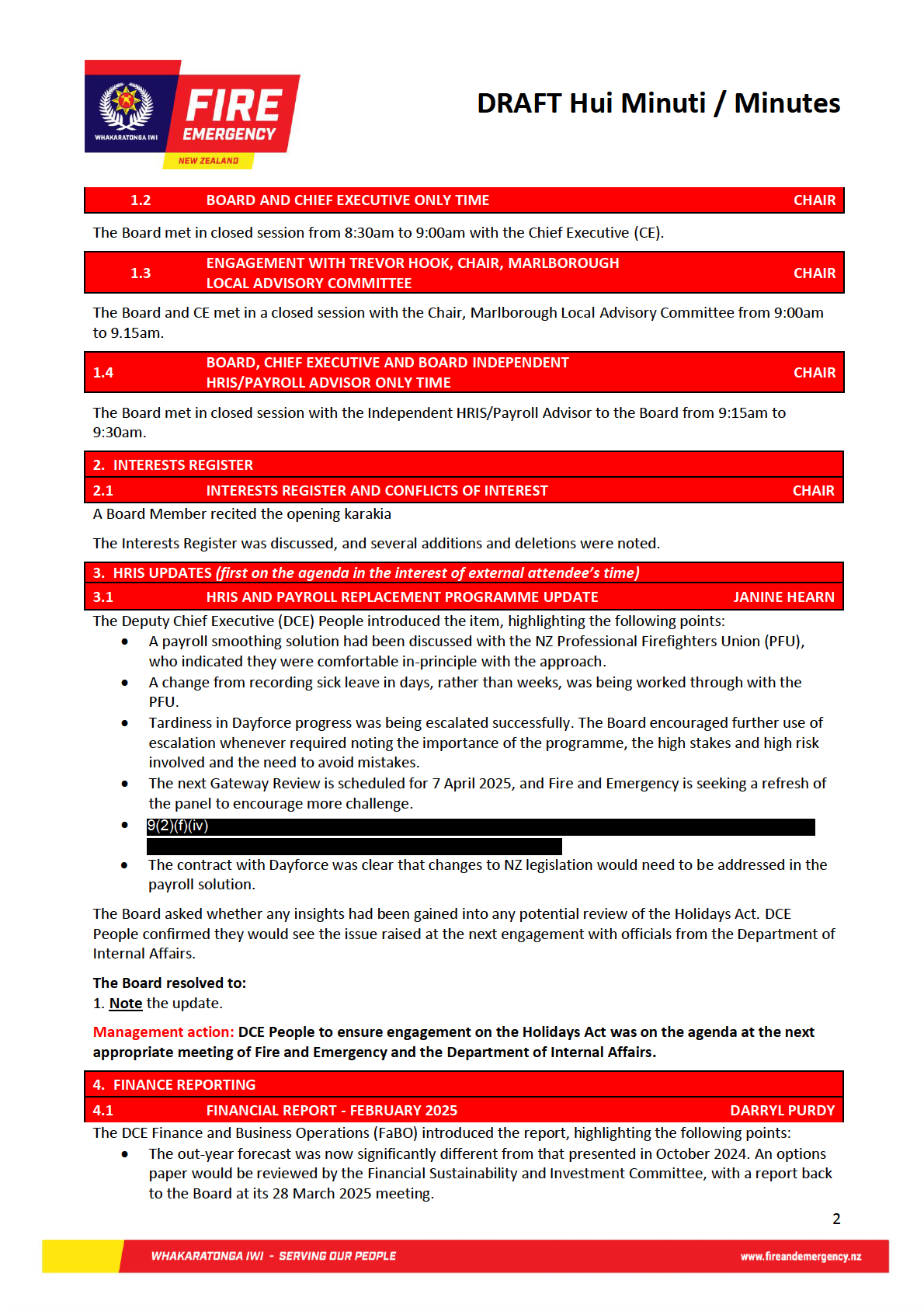
1982
ACT
INFORMATION
OFFICIAL
THE
UNDER
RELEASED
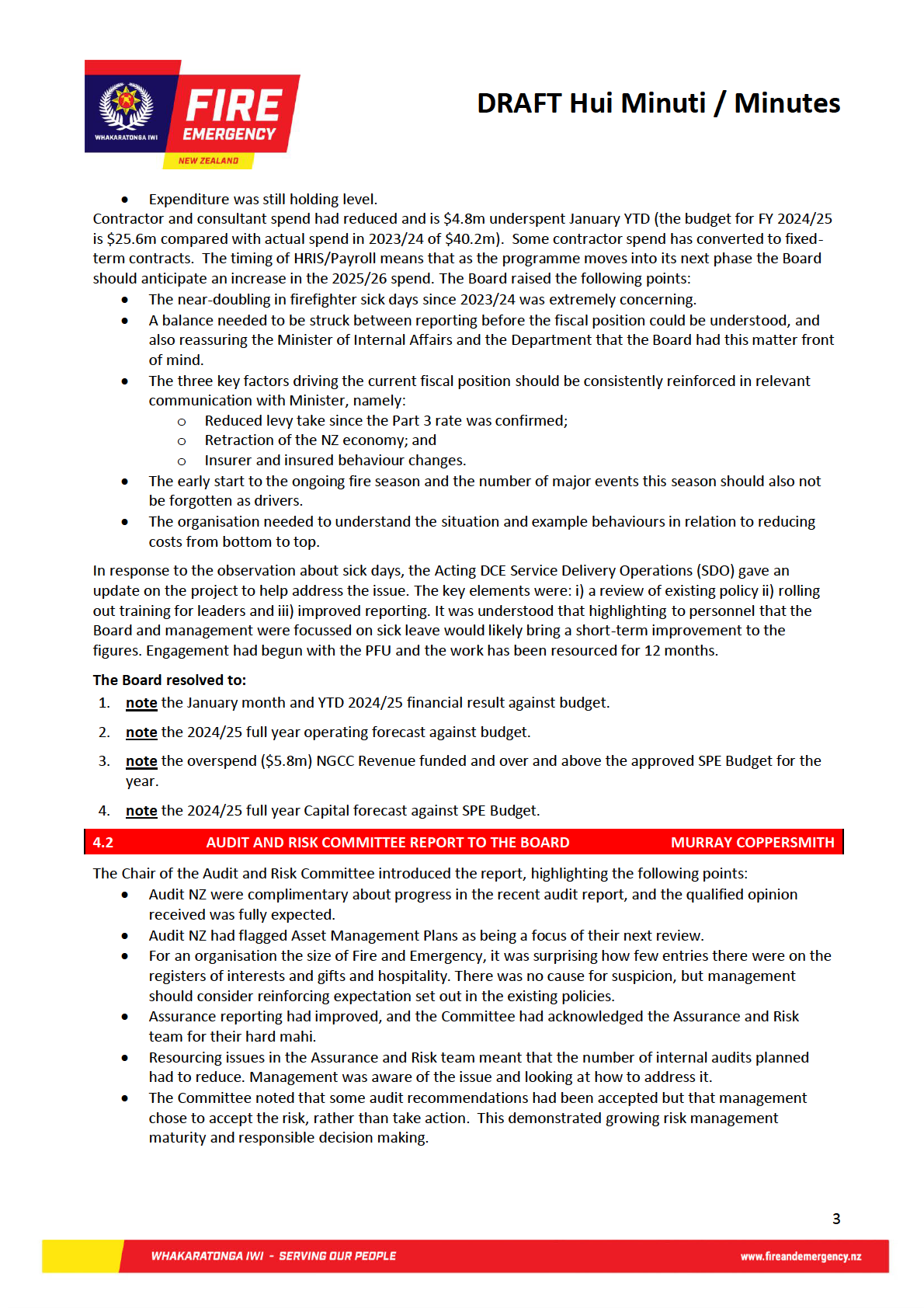
1982
ACT
INFORMATION
OFFICIAL
THE
UNDER
RELEASED
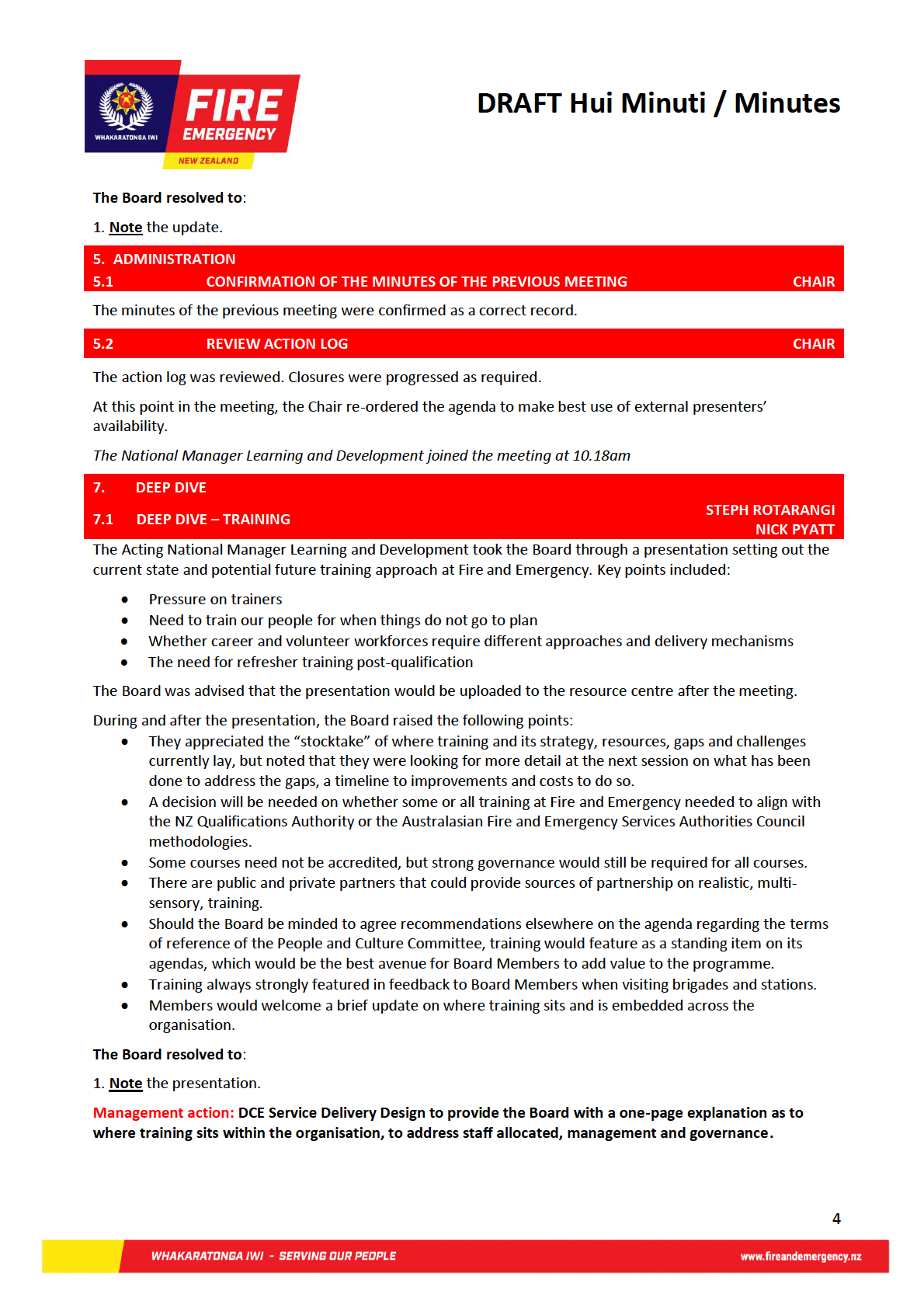
1982
ACT
INFORMATION
OFFICIAL
THE
UNDER
RELEASED
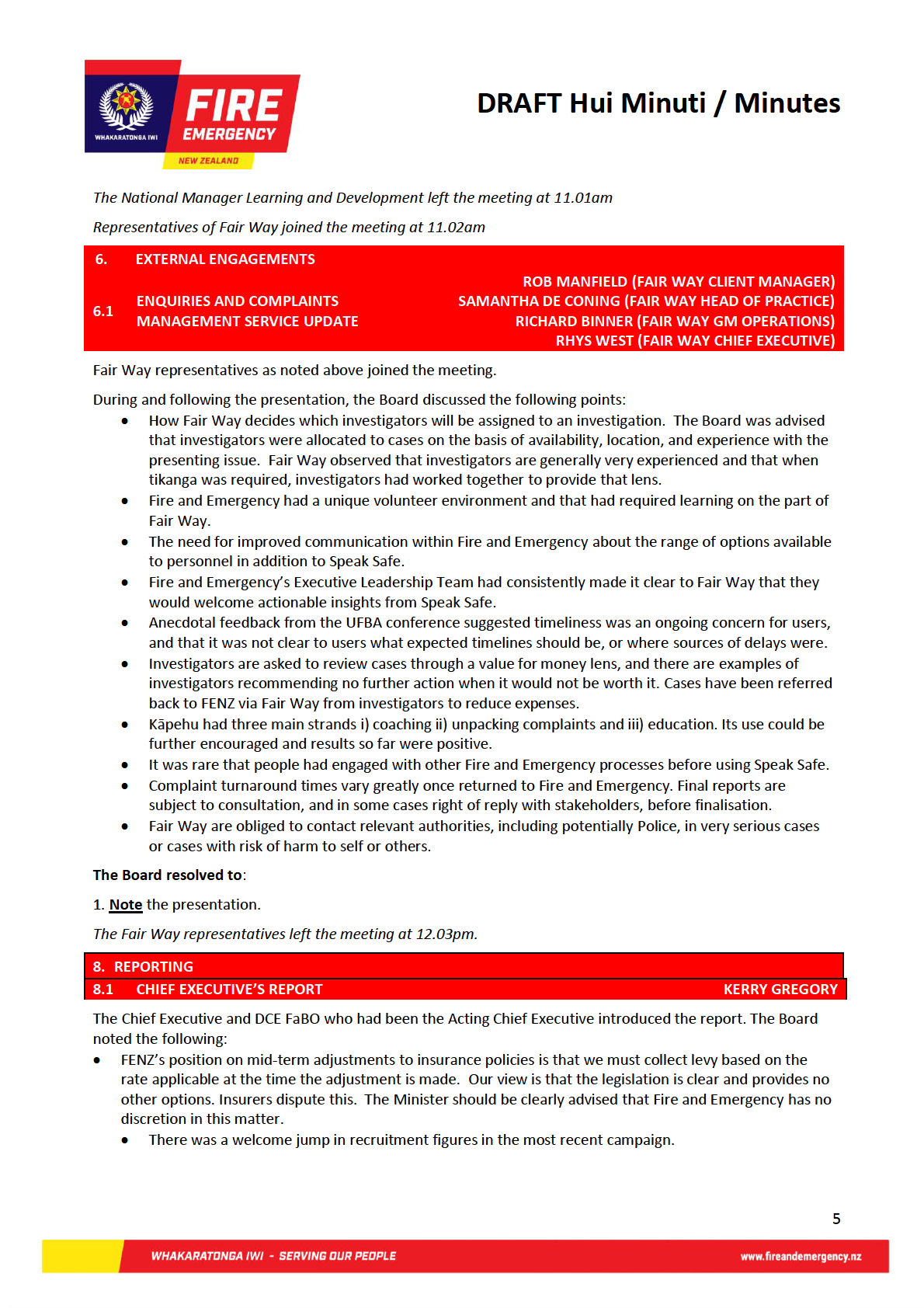
1982
ACT
INFORMATION
OFFICIAL
THE
UNDER
RELEASED
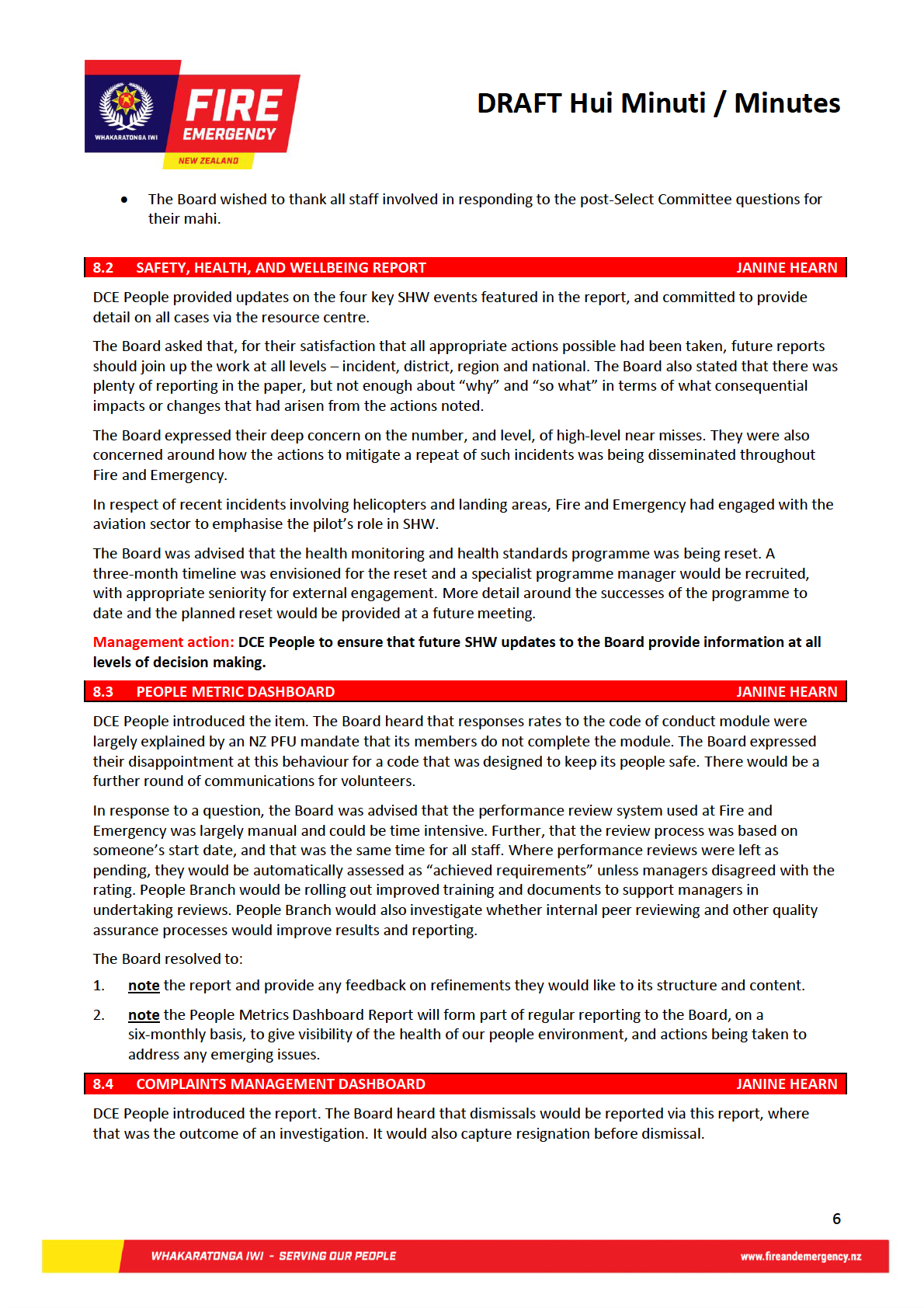
1982
ACT
INFORMATION
OFFICIAL
THE
UNDER
RELEASED
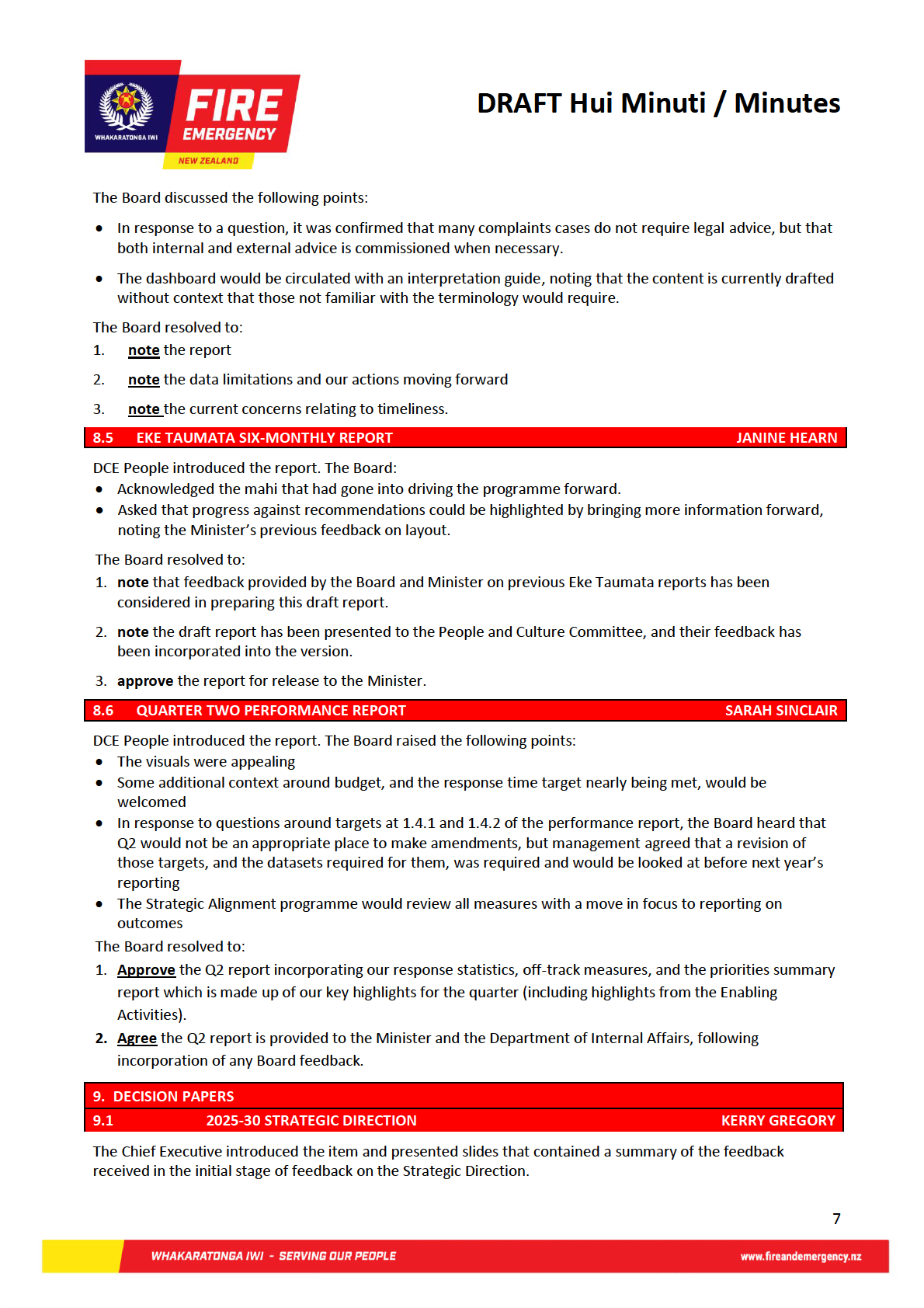
1982
ACT
INFORMATION
OFFICIAL
THE
UNDER
RELEASED
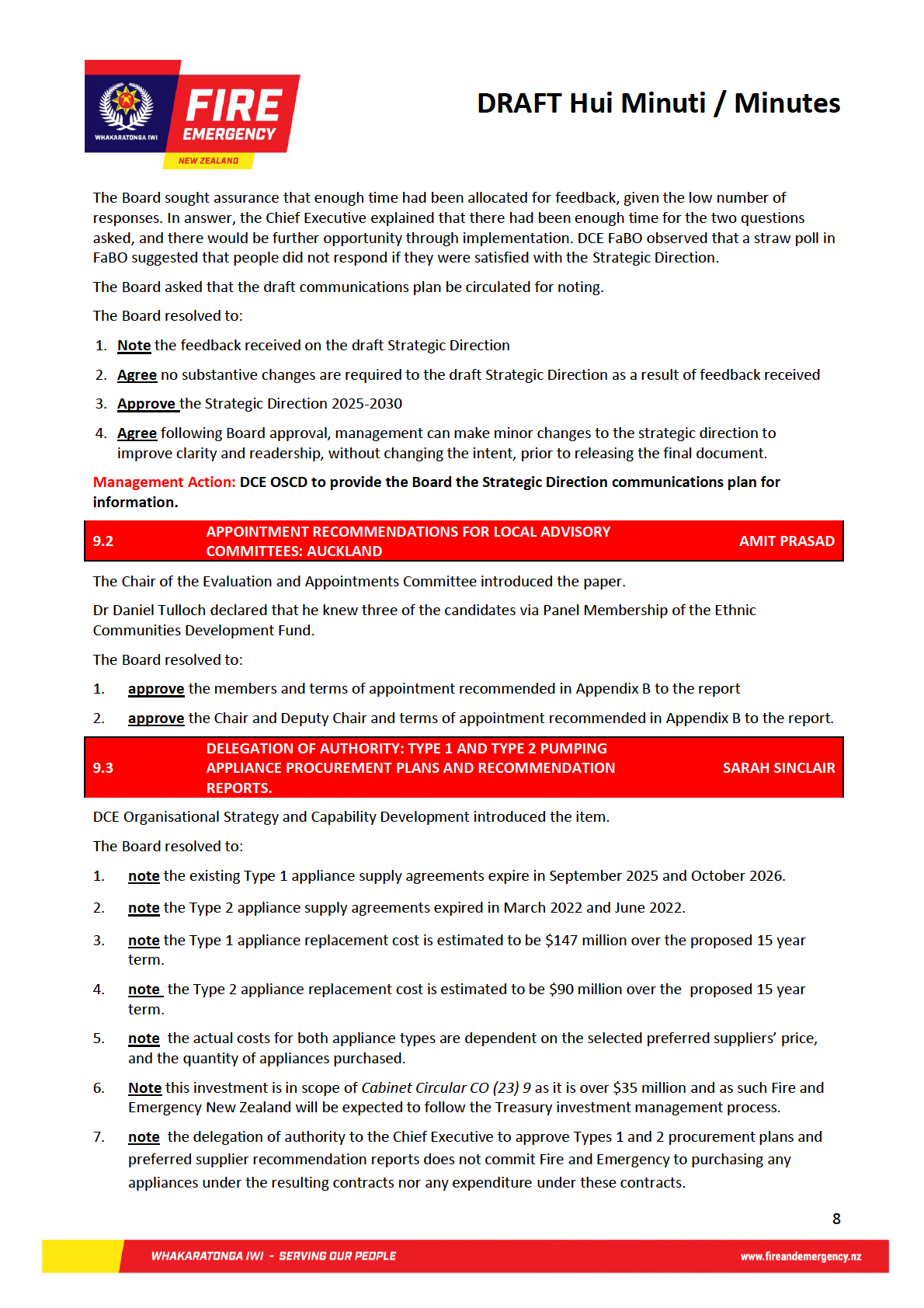
1982
ACT
INFORMATION
OFFICIAL
THE
UNDER
RELEASED
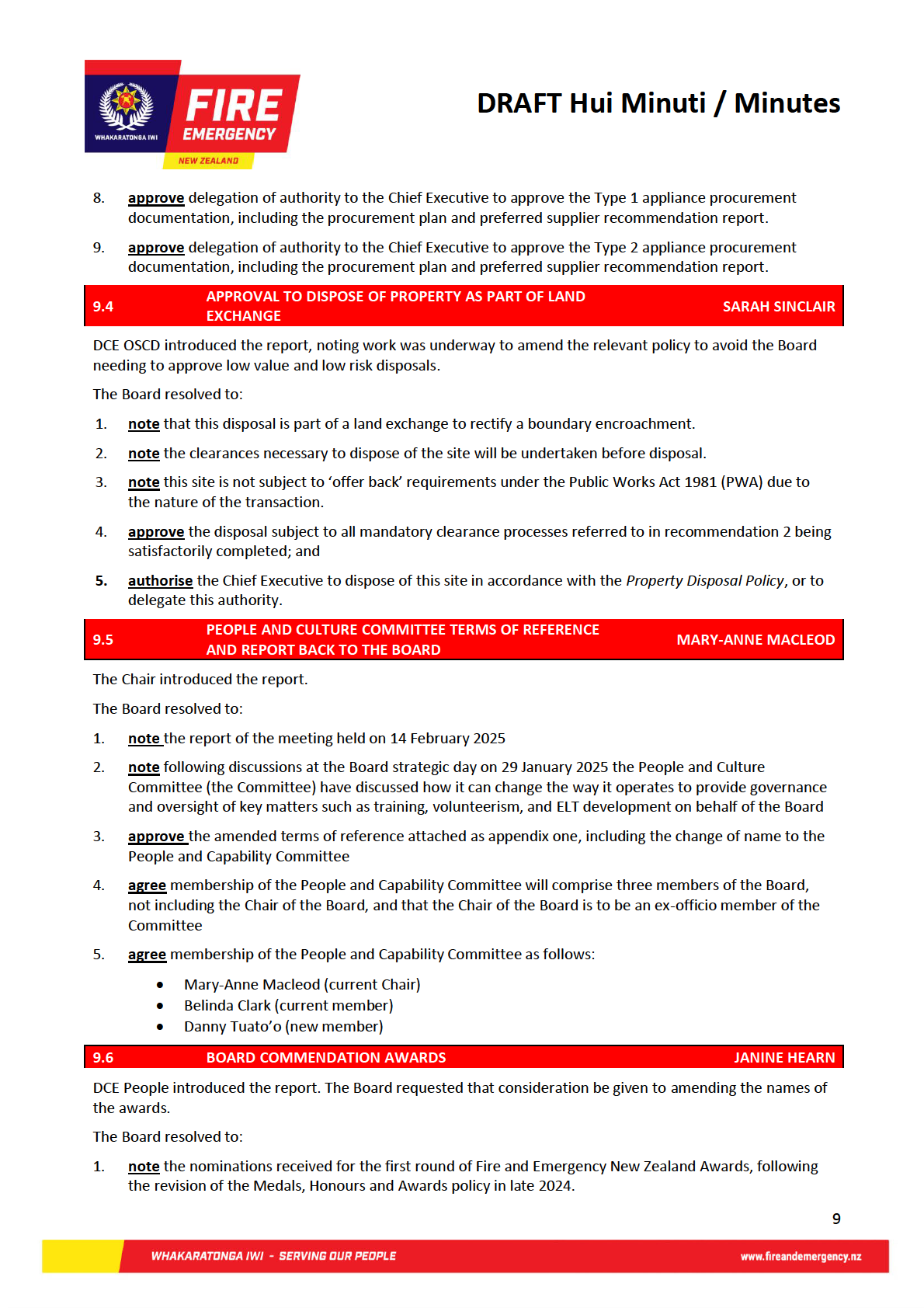
1982
ACT
INFORMATION
OFFICIAL
THE
UNDER
RELEASED
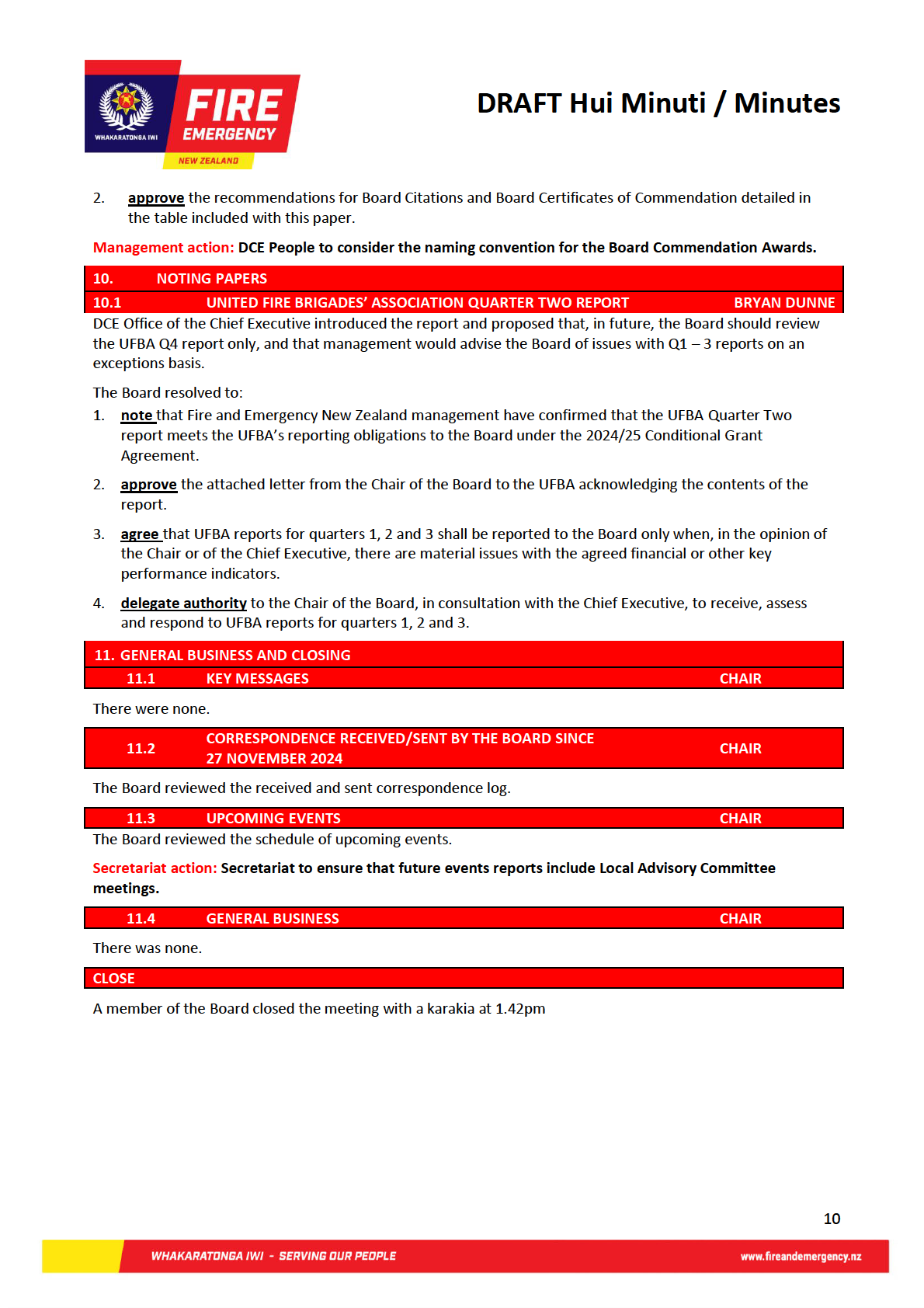
1982
ACT
INFORMATION
OFFICIAL
THE
UNDER
RELEASED

1982
ACT
INFORMATION
OFFICIAL
THE
UNDER
RELEASED

1982
ACT
INFORMATION
OFFICIAL
THE
UNDER
RELEASED
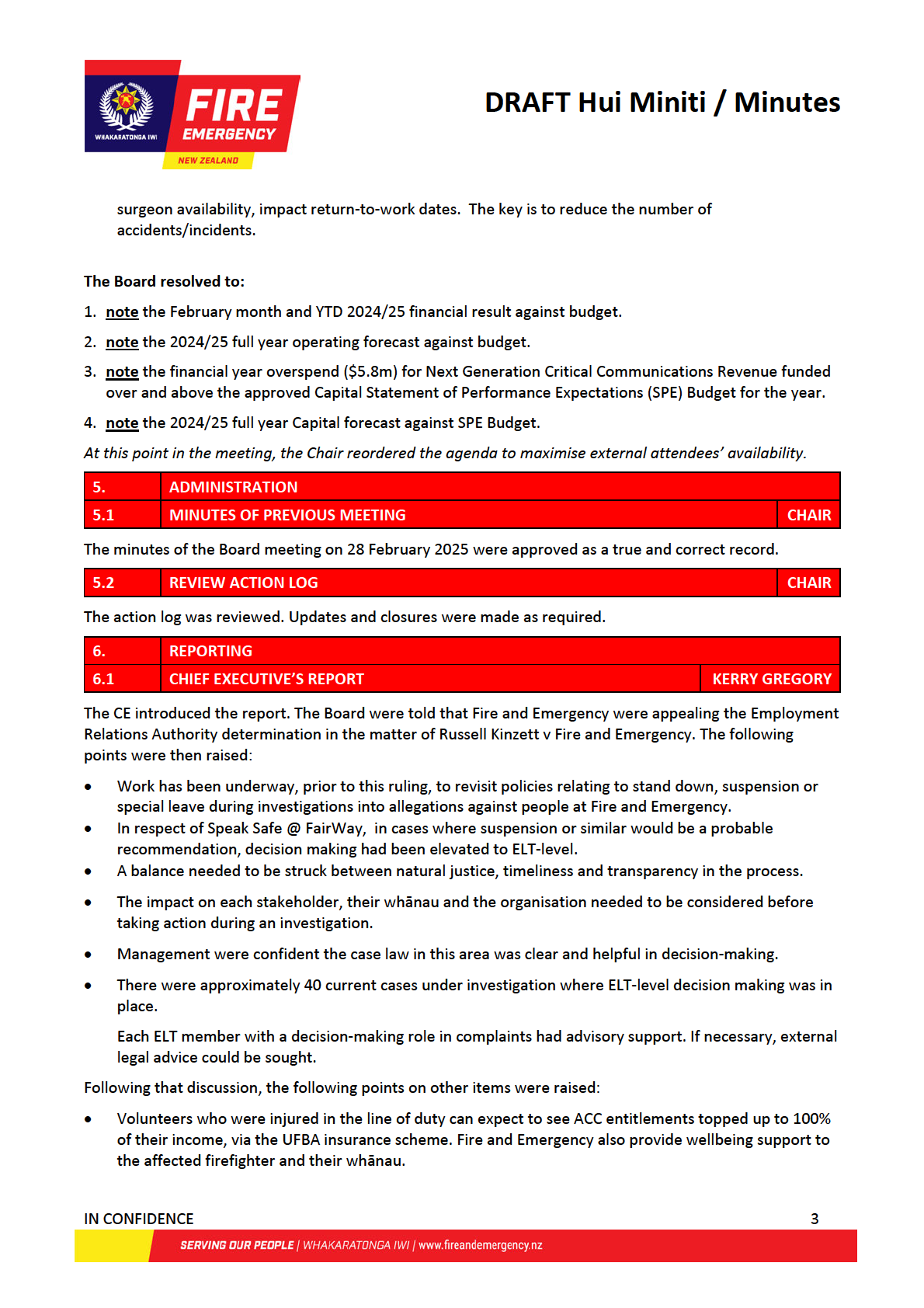
1982
ACT
INFORMATION
OFFICIAL
THE
UNDER
RELEASED
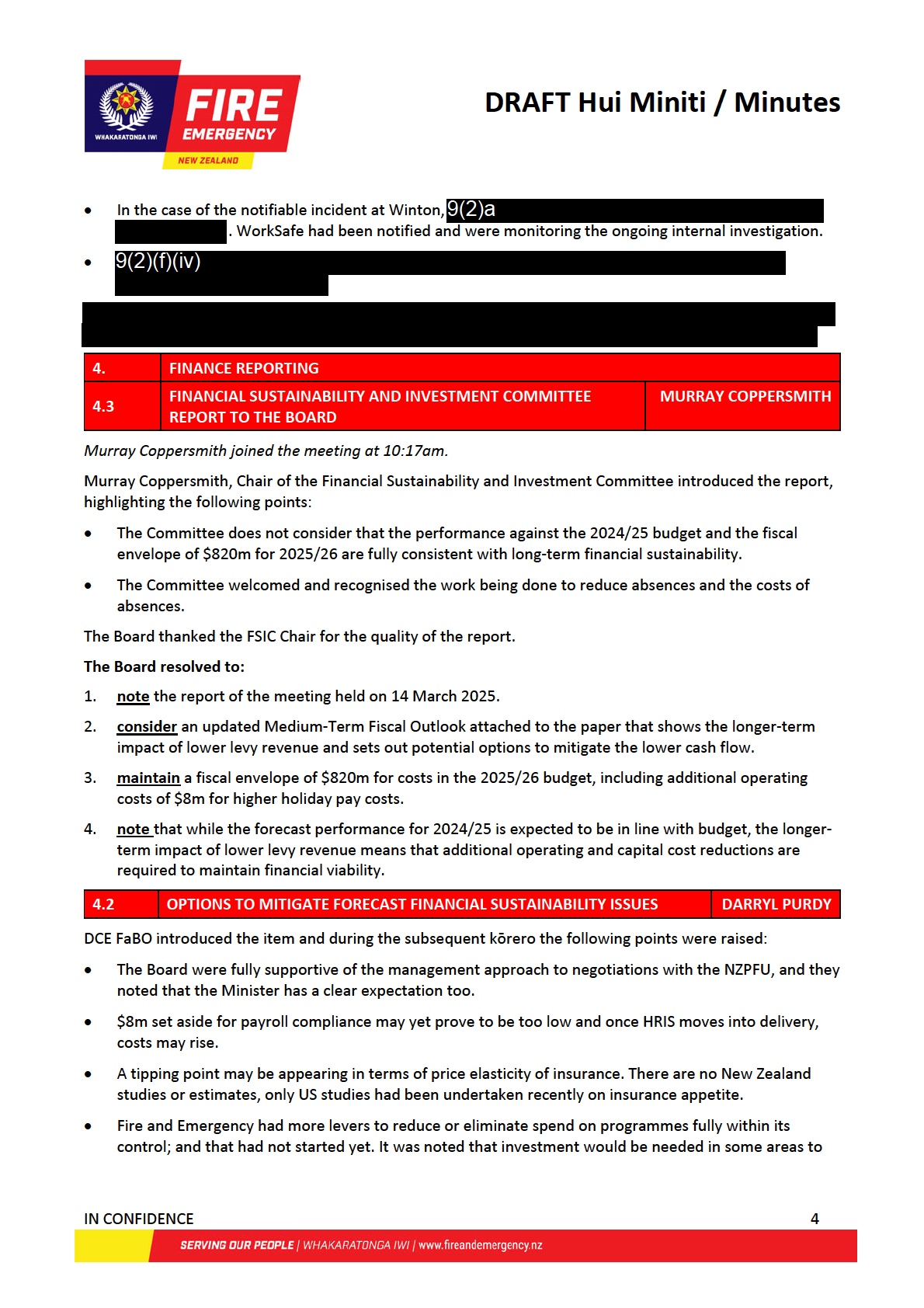
1982
ACT
INFORMATION
OFFICIAL
THE
UNDER
RELEASED

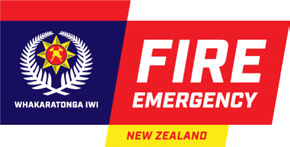 DRAFT Hui Miniti / Minutes
DRAFT Hui Miniti / Minutes
embed long-term savings. Management would need to be very deliberate in understanding the risks
associated with stopping or deferring projects.
• Work to deliver asset management plans was well underway, and they would need to be strictly
prioritised.
1982
• The Minister appeared to be receptive to Fire and Emergency’s position in relation to carbon credits for
the reductions brought about through reducing and fighting fires.
ACT
• The current reinvestment plan and the future operational capability programme were meaningful
actions to address costs now. The latter in particular will provide the organisation with evidence-and
intelligence -based model ing to inform transparent decisions about the future network.
• A discussion is needed with Government about Fire and Emergency’s offer to New Zealand particularly
in relation to functions provided for in Section 12 of the FENZ Act.
• The majority of costs are in readiness to respond with around 3.5 million hours held for that. Call backs,
cal outs and personnel costs are also significant contributors to organisational costs.
• There might be a role for artificial intelligence, to support and complement staff.
• There was little appetite to increase the core debt of Fire and Emergency to address spending
INFORMATION
restrictions.
• The first payment under the new levy arrangements will not be received until October 2026. That wil
be the first indication of the impact of the move to a sum-insured model.
• Further messaging would be circulated to staff once there was a plan to address costs and also support
staff to address the anxieties that come with change.
• It was clear from the presentation given to the Board by Southland Group Managers on the January
OFFICIAL
2025 Tiwai Point fire, that considerations of value for money were appropriately taken into account
during operations.
• Thought would need to be given to the impact that any changes have on firefighters, both career and
THE
volunteer, even if indirectly.
The Board resolved to:
1.
note that in the March Medium-Term Fiscal Outlook Update, cash was forecasted to drop below $50m in
2026/27 and that, without mitigations, Fire and Emergency’s longer-term financial sustainability could be
at risk.
UNDER
2.
note that the decrease in cash from the Board Approved Financial Assumptions forecast is largely due to
decreases in levy revenue growth in 2024/25, increases in expenditure on key projects and increases in
capital expenditure.
3.
note that there are financial risks which could further reduce forecast cash and increase the risk of Fire
and Emergency being financial y unsustainable. These include but are not limited to: changes in the
valuation base in the Part 3 Levy; further reductions in levy growth rates; NZPFU settlement being higher
than assumed; and additional costs arising from the compliance review and remediation of Holidays Act
RELEASED
payments.
4.
note that seven options are identified in this paper to mitigate the forecast decrease in cash.
IN CONFIDENCE
5
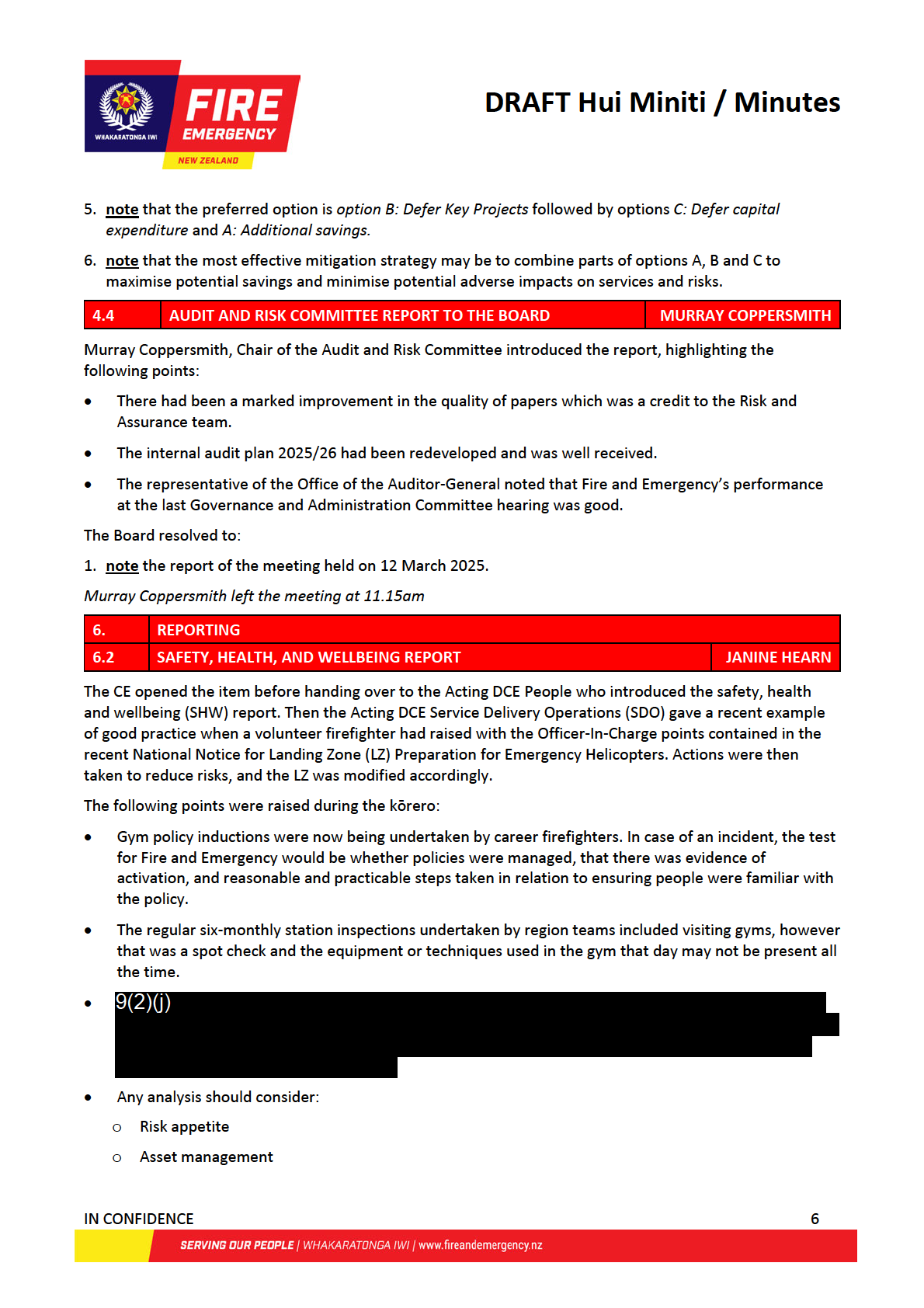
1982
ACT
INFORMATION
OFFICIAL
THE
UNDER
RELEASED
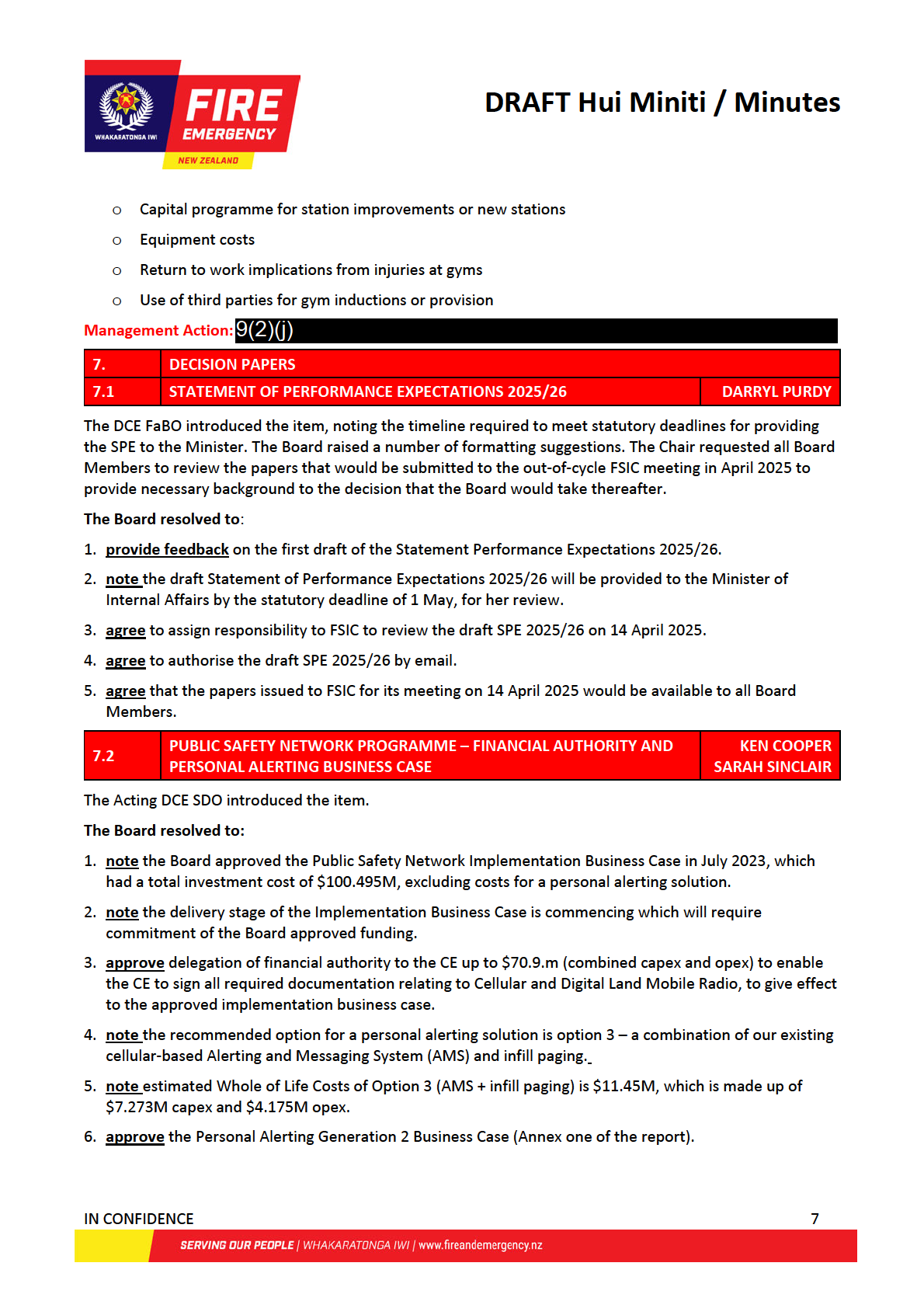
1982
ACT
INFORMATION
OFFICIAL
THE
UNDER
RELEASED
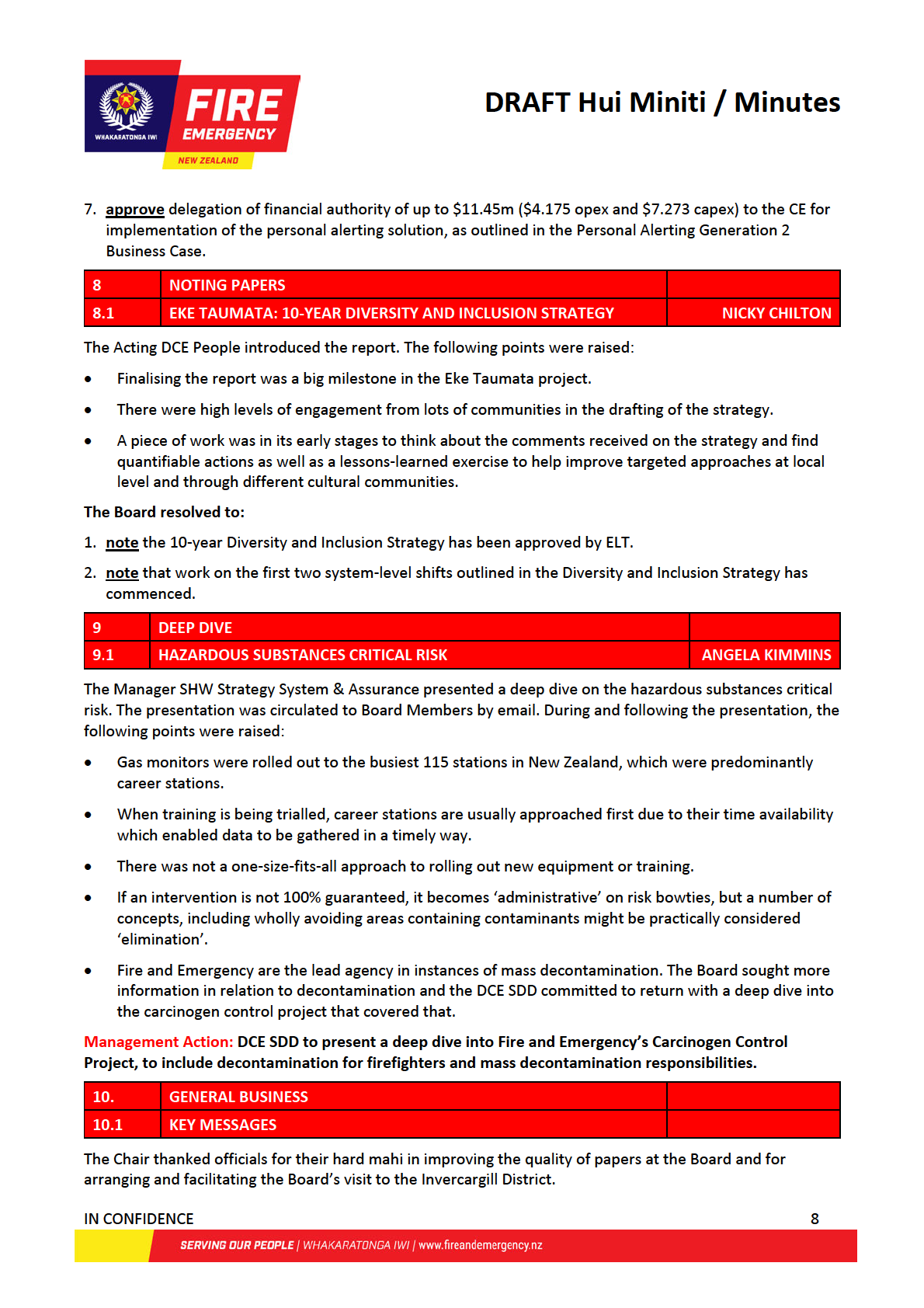
1982
ACT
INFORMATION
OFFICIAL
THE
UNDER
RELEASED
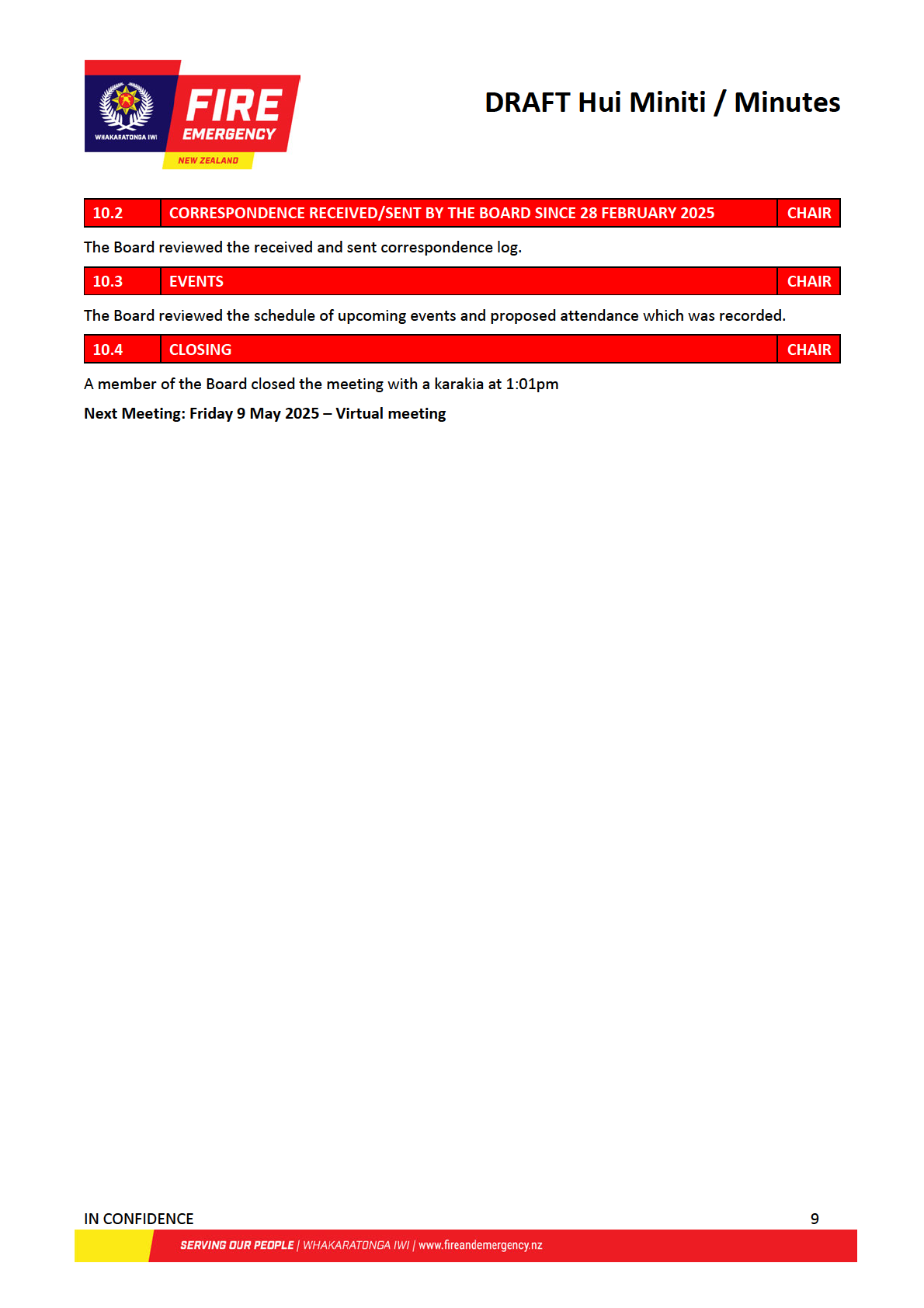
1982
ACT
INFORMATION
OFFICIAL
THE
UNDER
RELEASED
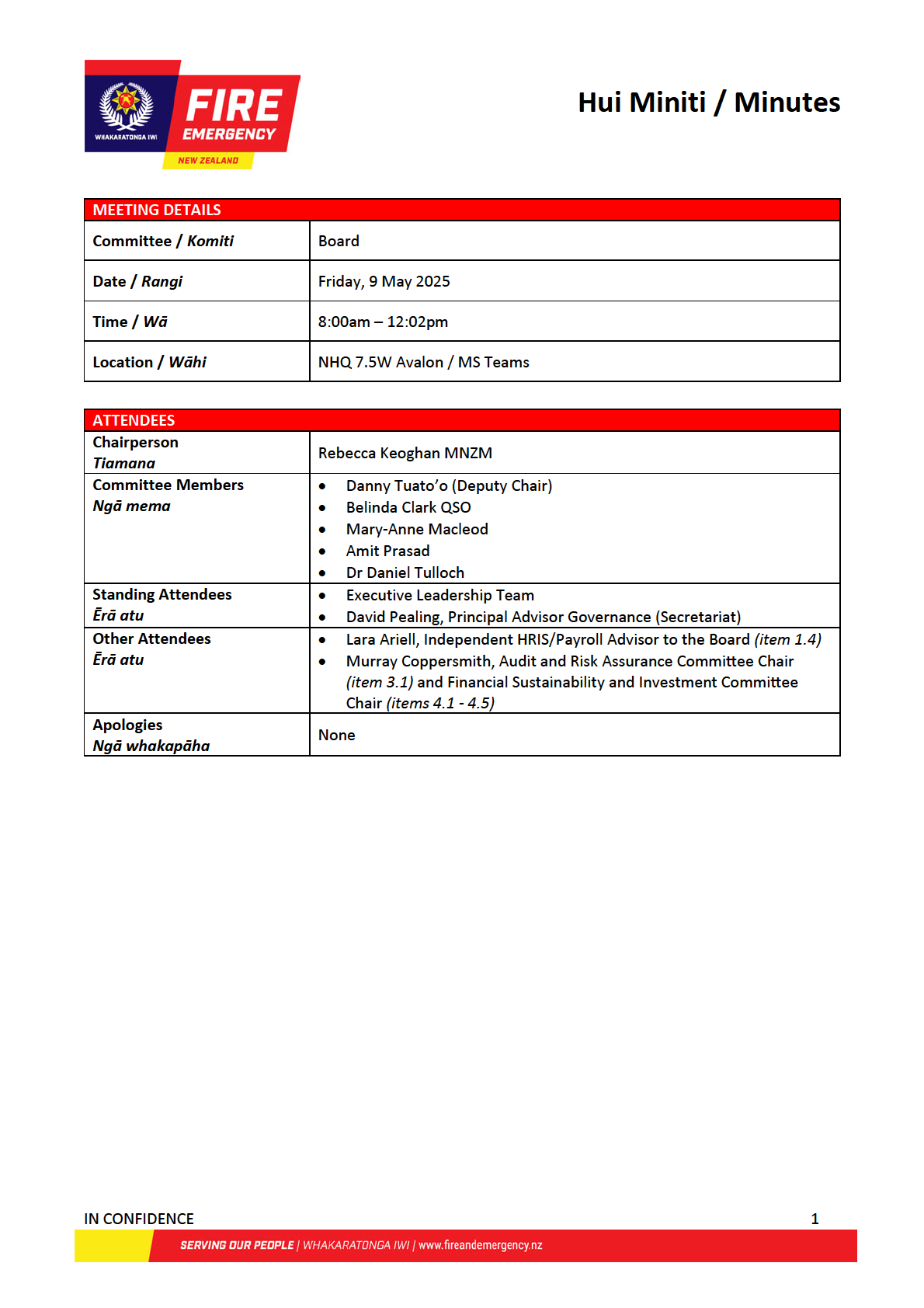
1982
ACT
INFORMATION
OFFICIAL
THE
UNDER
RELEASED
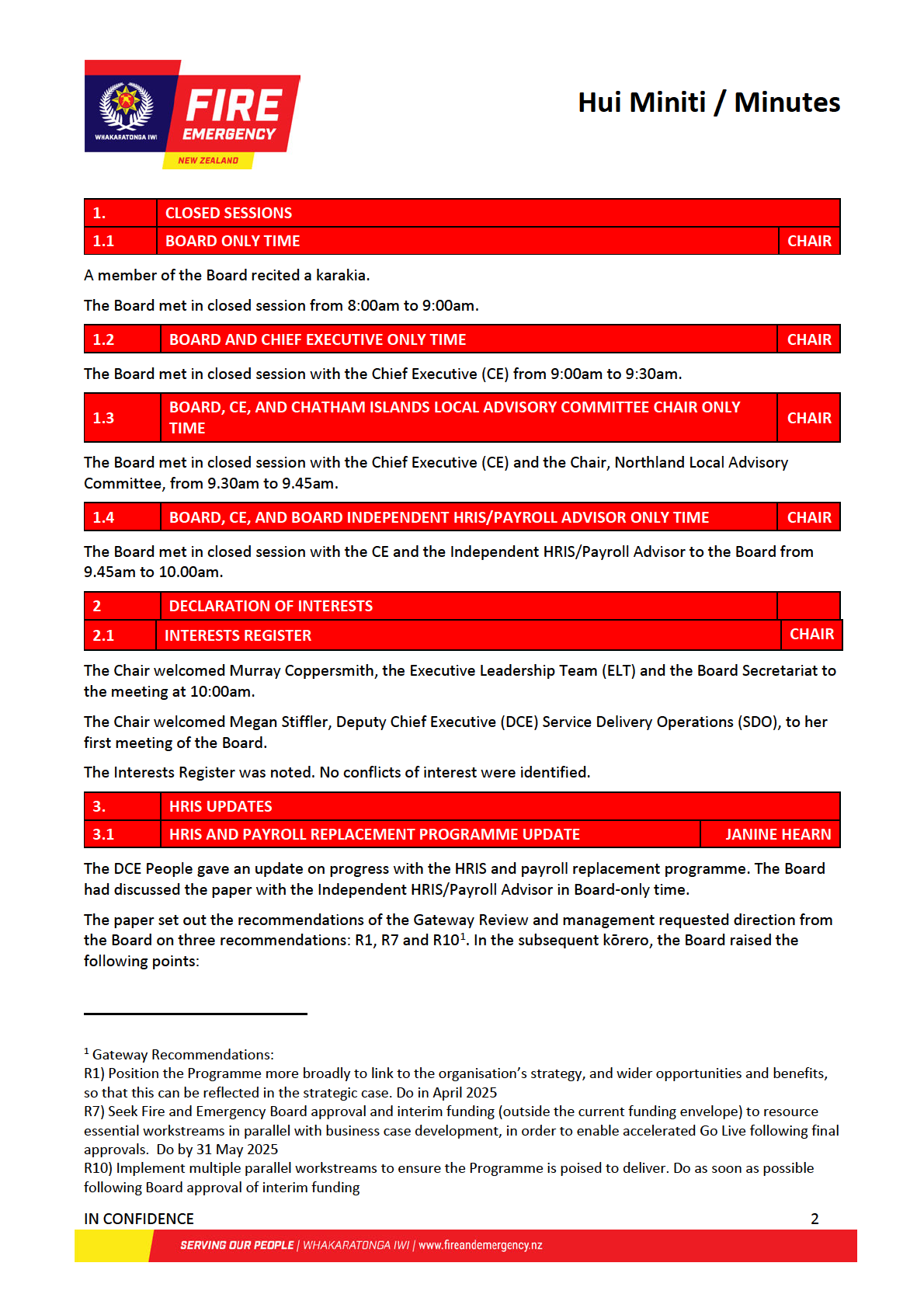
1982
ACT
INFORMATION
OFFICIAL
THE
UNDER
RELEASED

 Hui Miniti / Minutes
Hui Miniti / Minutes
• The project is being managed using an Agile project approach, and it would be useful to reemphasise
this with Treasury and the Gateway team.
• Three new members had been added to the review team since the last review. This was partly at the
request of management to ensure renewed rigour in the process. It appeared that a number of
1982
points previously articulated by Fire and Emergency had not been adequately shared with the new
panellists.
• Removing rostering from the SMS system without thorough due diligence could destabilise the
ACT
entire SMS platform, which was considered high risk given SMS’s role in the frontline.
• The Board noted that the original plan was to address rostering functionality in the next phase of
development.
• The DCE People, as the senior responsible officer, is invited to provide feedback to Treasury, and has
done so in writing. The written feedback will be followed up in person.
• DayForce had increased the seniority and capability of the resources they allocated to the project,
noting that previously they were not keeping up with Fire and Emergency’s resource.
The Board acknowledged the sentiment expressed in R1 but recognised a significant amount of risk with the
suggested timeframe. Communicating the rationale and consistent messaging with all stakeholders w
INFORMATION as of
critical importance.
The Board asked for a breakdown of the costs of the four FTE resources proposed to be retained/funded,
noting the associated figure was very high for the number of people. The DCE People confirmed the
breakdown by position and clarified that the costs included agency fees. The Chair of the Audit and Risk
Committee confirmed his understanding that the costs reflected market realities for such roles. The Board
requested that the costs be scrutinised in the preparation of the out-of-cycle paper referenced in the report.
OFFICIAL
The Board resolved to:
1.
note the outcome and recommendations of the recent Gateway Review, and the analysis of the impact
of those recommendations on the programme.
THE
2.
note that, if accepted, some recommendations would alter the previously approved approach to the
programme.
3.
provide direction on the key Gateway Review recommendations, set out in the report, as follows:
a. To accept R1, within previous Board direction on resources and timelines.
UNDER
b. To accept R7 and R10.
4.
approve funding of up to $720,412, through to 24 December 2025, to secure critical programme
resources.
5.
approve the submission of an out of cycle paper, by 31 May 2025, seeking approval to stand up key
workstreams and commence the build phase, ahead of submission and approval of the Implementation
Business Case.
RELEASED
IN CONFIDENCE
3

1982
ACT
INFORMATION
OFFICIAL
THE
UNDER
RELEASED
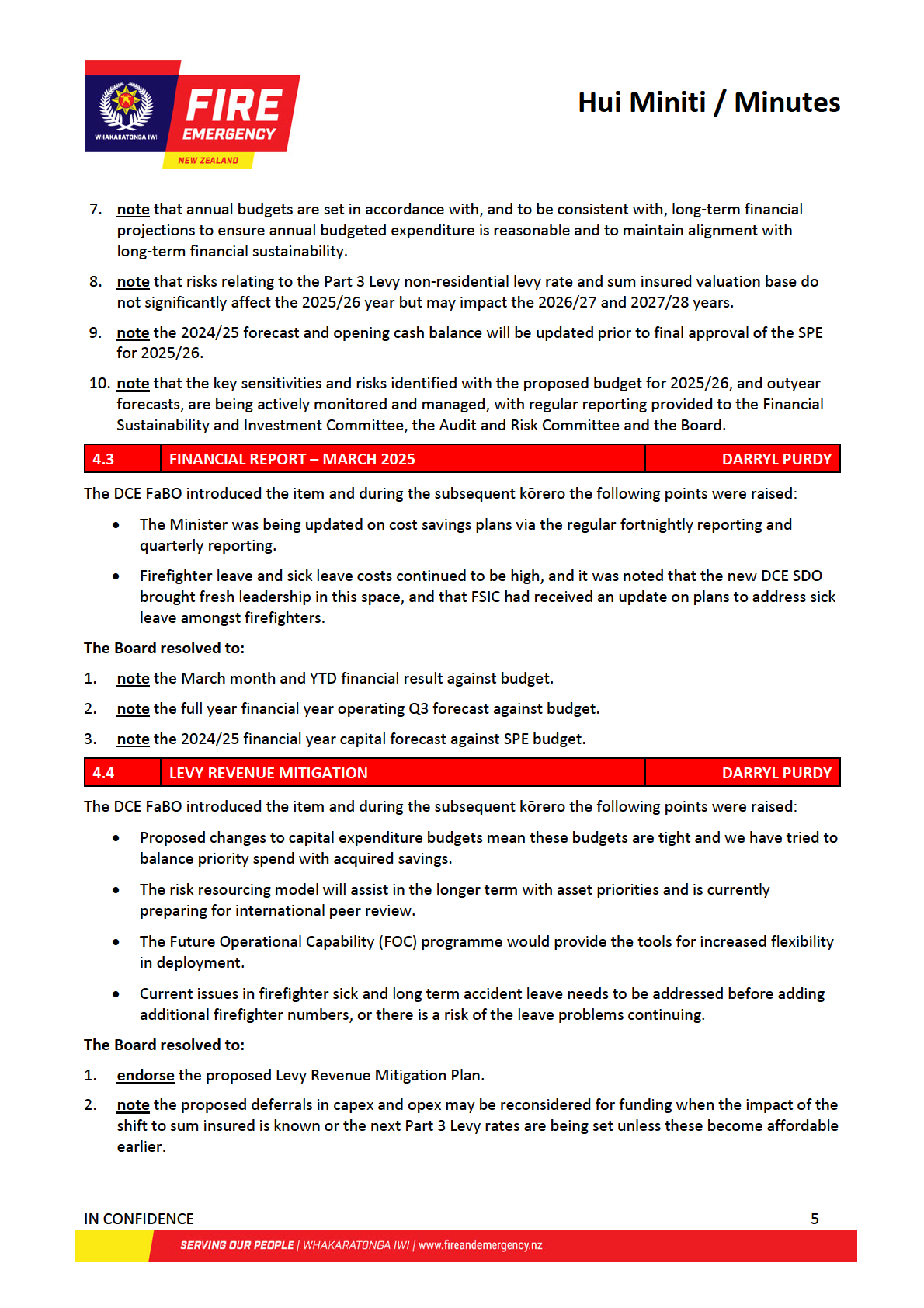
1982
ACT
INFORMATION
OFFICIAL
THE
UNDER
RELEASED

1982
ACT
INFORMATION
OFFICIAL
THE
UNDER
RELEASED
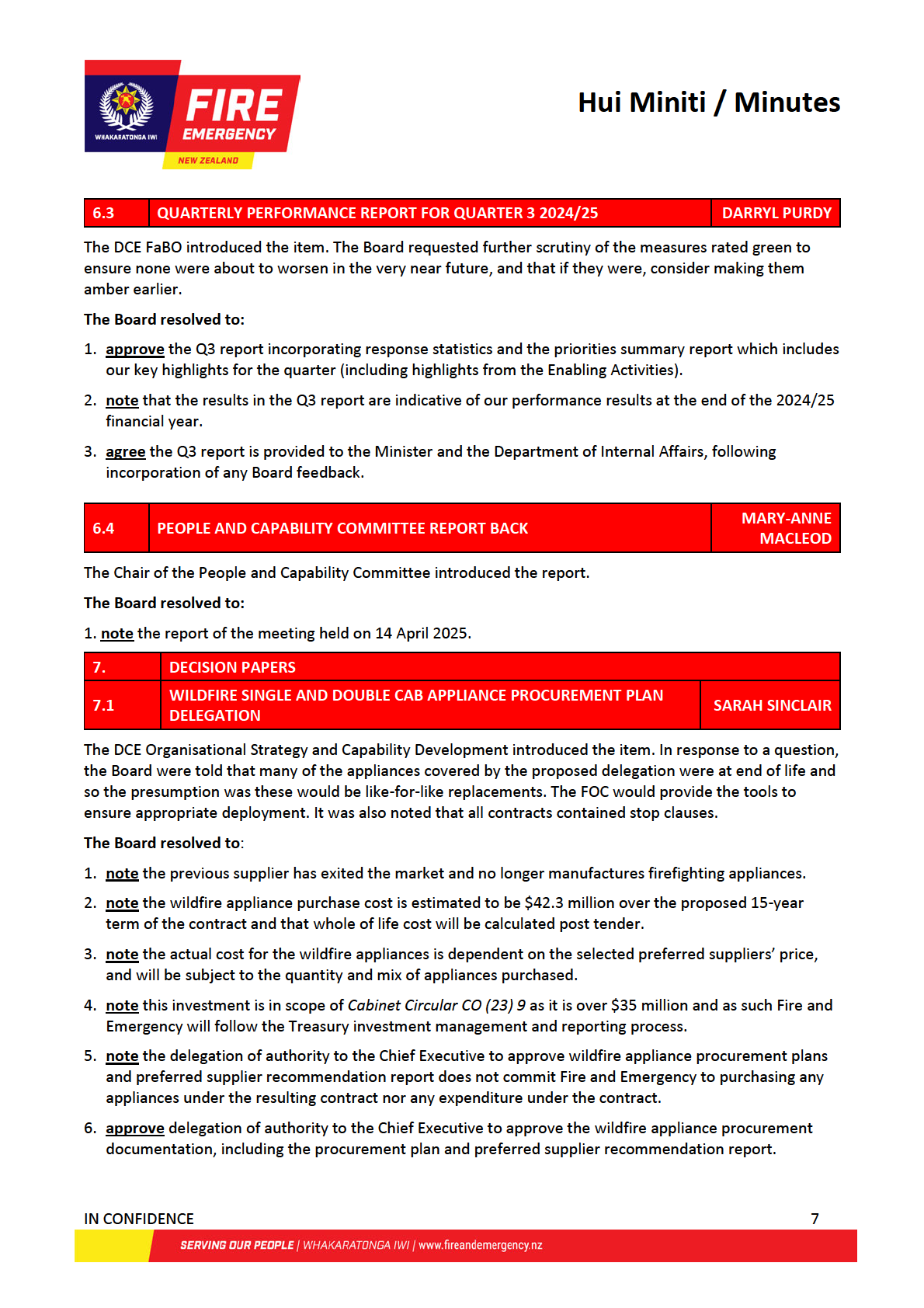
1982
ACT
INFORMATION
OFFICIAL
THE
UNDER
RELEASED
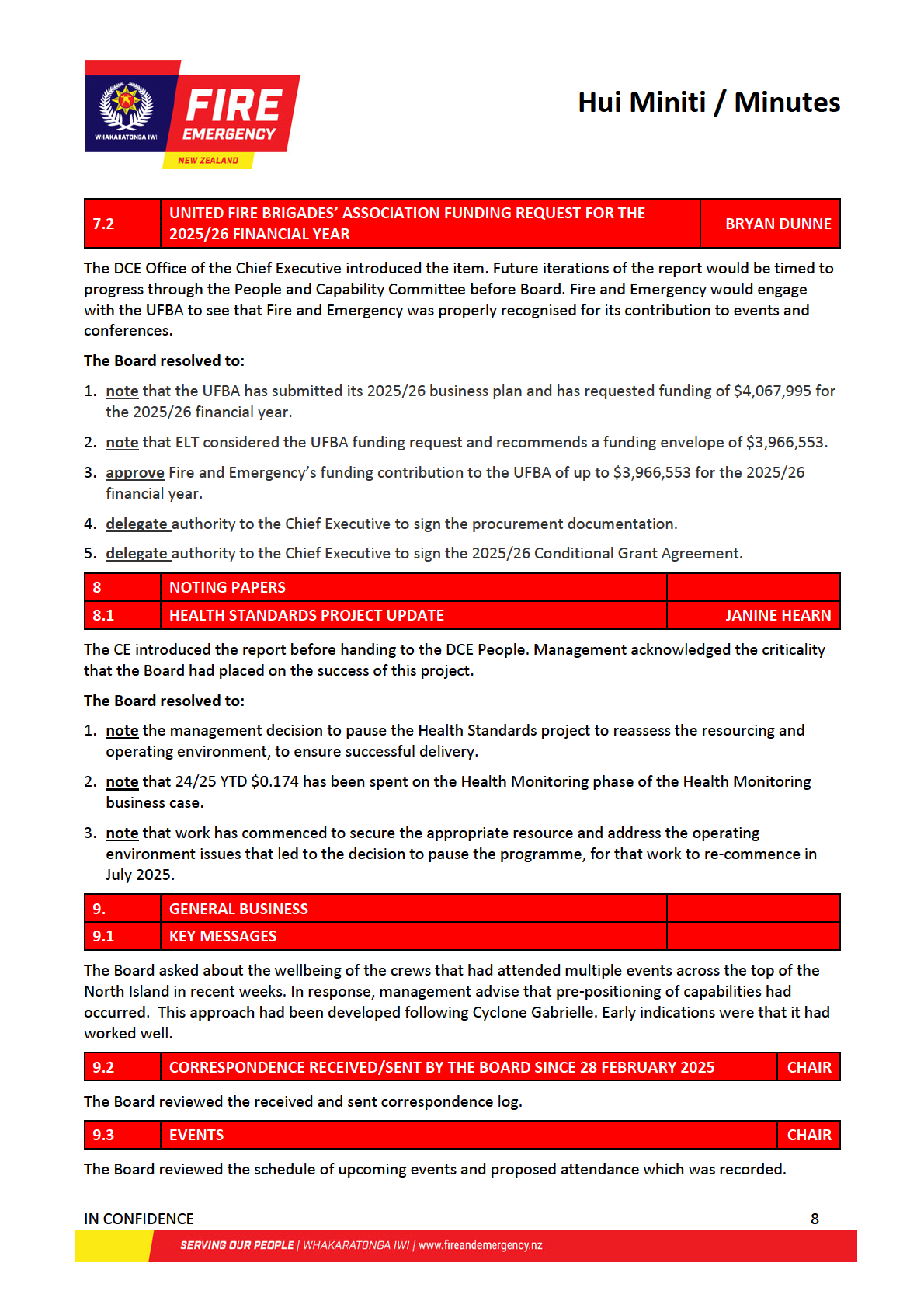
1982
ACT
INFORMATION
OFFICIAL
THE
UNDER
RELEASED

1982
ACT
INFORMATION
OFFICIAL
THE
UNDER
RELEASED






























